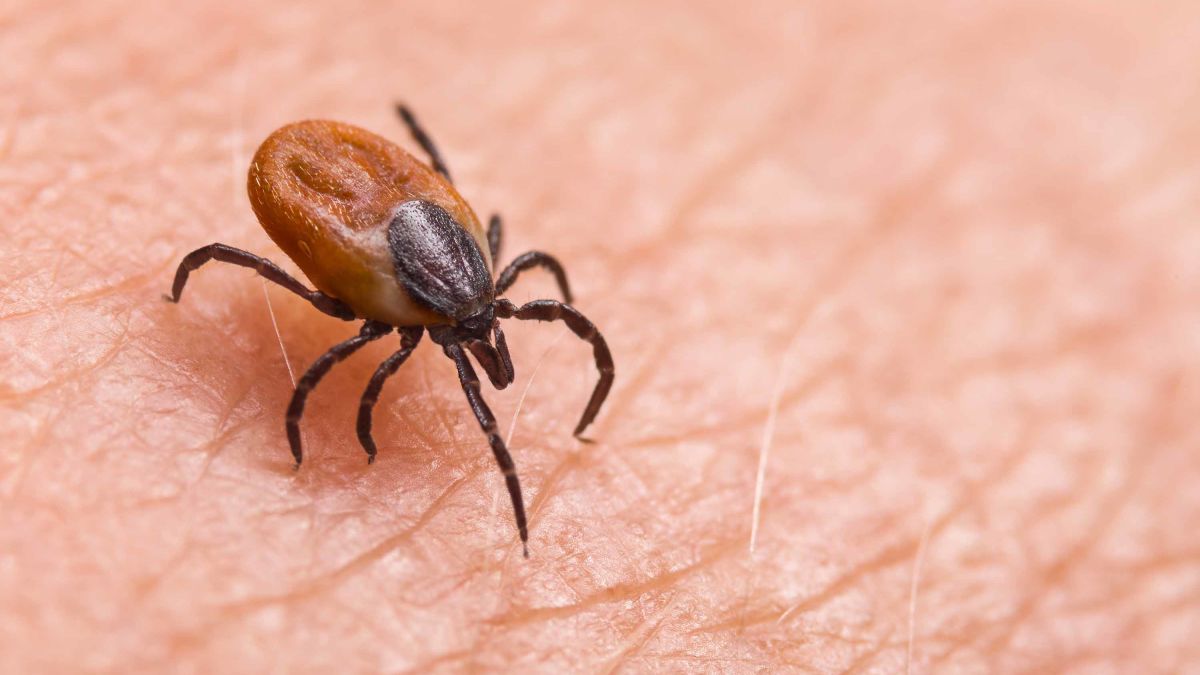"Understanding Powassan Virus Disease: Symptoms, Transmission, and Prevention Strategies"

Introduction:
Powassan Virus Disease (PVD), an emerging tick-borne illness, has garnered significant attention due to its potential for severe neurological complications. Recently, a fatality in the United States has raised concerns regarding the impact of this virus on public health. This article aims to provide a comprehensive understanding of Powassan Virus Disease, including its transmission, symptoms, diagnosis, treatment, and preventive measures.
Transmission:
Powassan virus is primarily transmitted through the bite of infected Ixodes ticks, commonly known as black-legged ticks or deer ticks. These ticks are prevalent in specific regions, including North America and parts of Europe and Asia. Unlike other tick-borne illnesses, Powassan Virus Disease can also be transmitted through the bite of an infected tick within minutes, increasing the risk of infection.
Symptoms:
The symptoms of Powassan Virus Disease can range from mild to severe and typically appear within one to four weeks after a tick bite. The initial symptoms include fever, headache, muscle weakness, and fatigue. As the infection progresses, more severe neurological symptoms may arise, such as confusion, seizures, and difficulty speaking or coordinating movements. In some cases, Powassan Virus Disease can lead to life-threatening encephalitis or meningitis.
Diagnosis:
Diagnosing Powassan Virus Disease can be challenging, as its symptoms resemble those of other tick-borne illnesses and viral infections. Healthcare professionals may consider a combination of factors, including the patient's clinical presentation, exposure to ticks, and geographic location. Laboratory tests, such as PCR (Polymerase Chain Reaction) or serological assays, can help confirm the presence of Powassan virus-specific antibodies or genetic material in the patient's blood or cerebrospinal fluid.
Epidemiology:
Powassan Virus Disease was first identified in Powassan, Ontario, Canada, in 1958. Since then, sporadic cases have been reported primarily in North America. The incidence of PVD remains relatively low compared to other tick-borne illnesses; however, the number of reported cases has been increasing over the years. It is important to note that Powassan virus infection is considered rare, but the severity of the disease and its potential for long-term neurological consequences warrant attention and vigilance.
Risk Factors:
Certain factors increase the risk of Powassan Virus Disease. Individuals who reside or spend significant time in areas where infected ticks are prevalent, such as wooded or grassy regions, are at a higher risk of exposure. Engaging in outdoor activities like hiking, camping, or gardening in these areas further amplifies the risk. Moreover, individuals with weakened immune systems, such as the elderly or those with underlying medical conditions, may be more susceptible to severe forms of the disease.
Treatment:
Currently, no specific antiviral treatment exists for Powassan Virus Disease. Supportive care, including intravenous fluids, pain management, and treatment of secondary infections, is essential to alleviate symptoms and aid in recovery. Hospitalization may be necessary, particularly for individuals with severe neurological complications. Prompt medical attention is crucial for managing Powassan Virus Disease effectively.
Prevention:
Preventing Powassan Virus Disease primarily revolves around minimizing exposure to ticks. Implementing the following preventive measures can greatly reduce the risk of infection:
- Avoiding tick-infested areas such as tall grasses, wooded areas, and leaf litter.
- Wearing protective clothing, including long sleeves, long pants, and closed-toe shoes, when venturing into tick-prone environments.
- Applying an EPA-approved tick repellent on exposed skin and clothing.
- Conducting thorough tick checks on the body after outdoor activities, paying close attention to hidden areas such as the scalp, groin, and armpits.
- Promptly
removing attached ticks using fine-tipped tweezers, grasping the tick
close to the skin and pulling upwards with steady pressure Emerging Concerns:
The emergence of Powassan Virus Disease as a public health concern is attributed to various factors. Climate change and increasing wildlife populations contribute to the expansion of tick habitats, thereby facilitating the transmission of the virus. Additionally, heightened awareness and improved diagnostic techniques have led to better detection and reporting of cases. However, it is important to conduct further research and surveillance to gain a comprehensive understanding of the virus and its potential impact on public health.
Public Health Measures: Public health authorities play a crucial role in preventing and controlling the spread of Powassan Virus Disease. Timely communication and education campaigns aimed at raising awareness about the disease, its symptoms, and preventive measures are essential. Surveillance programs that monitor tick populations, track cases, and identify high-risk areas help in implementing targeted interventions. Collaboration between healthcare providers, researchers, and public health agencies is vital in addressing the challenges posed by Powassan Virus Disease.
Research and Vaccine Development: Ongoing research endeavors focus on gaining insights into the biology, epidemiology, and pathogenesis of Powassan virus to facilitate the development of effective treatments and preventive strategies. Vaccine development against Powassan Virus Disease is currently an area of active investigation. Vaccines targeting similar tick-borne viruses, such as the tick-borne encephalitis virus, offer promising avenues for the development of preventive measures against Powassan virus infection.
Conclusion:
Powassan Virus Disease poses a growing concern due to its potential for severe neurological complications and the absence of specific antiviral treatment. Understanding the transmission, symptoms, diagnosis, treatment, and preventive measures associated with PVD is crucial for healthcare professionals and the general public alike. By adopting proactive measures to prevent tick bites and promoting early diagnosis and treatment, we can effectively mitigate the impact of Powassan Virus Disease on public health.
Comments
Post a Comment